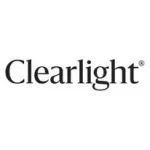- 18 Jul, 2016
- /
- Clearlight Infrared Saunas
- /
- No Comments
Understanding EMF & ELF When Buying an Infrared Sauna
Due to its numerous health benefits, far infrared or FIR saunas continue to rise in popularity. They have been known to help people lose weight, reduce stress, ease chronic pain, and help the body detox. However, not all FIR saunas are created equal when comparing the level of exposure to EMF or electromagnetic fields. For this reason, it’s important to have an understanding of EMF and ELF when purchasing a sauna.

Most people who buy saunas use them multiple times a week for up to 30-40 minutes per session. Repeated exposure to a high level of EMF could be harmful to their health. Not all sauna models conduct the same frequency levels, and the good news is there are low EMF saunas available.
The solution is to ensure the far infrared sauna you are buying or using does not expose you to a high-EMF environment. With updated technology and modernized design, FIR saunas with low EMF and ELF are an option. Understanding how a FIR sauna works and the associated safety information is important to know before purchasing a sauna for your home or business.
What Is EMF?
Radiation is the invisible energy produced by electricity. Also referred to as electric and magnetic fields, these areas move a current through a wire and are all around us. The EMF fields are measured in milligauss (mG) and the ELF fields are measured in volts per meter. People who are highly sensitive to EMF can reduce exposure by eliminating or reducing the use of electrical devices in the home. Electromagnetic fields (EMF) are energy waves with frequency levels below 300 hertz or cycles per second.
There are two types of EMFs: higher-frequency and low- to mid-frequency. Someone exposed to a higher-frequency EMF, is subject to possible DNA or cell damage. While the research does not show low-frequency levels to be as harmful as higher frequencies, some people are very sensitive to the low-frequency.
What Is ELF?
Extremely low frequency (ELF) are electric fields with frequencies from 3 to 30 hertz. It is a non-ionizing radiation and sits on the low end of the electromagnetic spectrum.
Although most devices sit on this low frequency field, flat screens that use cathode ray tubes may expose people to a higher level of ELF radiation, but the amount still falls well below the government threshold. People can reduce their exposure to ELFs by turning off electrical devices not in use and immediately repair any faulty wiring which may generate higher ELF levels.
Health Concerns Linked to EMF
Different studies show varying results that increased exposure to high levels of EMF can lead to health problems including cancer, birth defects, and Lou Gehrig’s disease. EMF levels at increased rates have also been linked to symptoms such as headaches, fatigue, dizziness, and skin rashes.

Most of what we are exposed to in our typical environments are at such low EMF levels, we are not at risk. However, with the increase of technology and electrical devices we occupy ourselves with on a daily basis, any chance we have to reduce our exposure is best for our health.
Choose a Low EMF Sauna
To receive maximum benefit from your infrared sauna you will want to use your sauna 3-5 times per week. The more you use your infrared sauna, the more important it is to choose a low EMF and low ELF infrared sauna.

Far infrared saunas have a number of health benefits to offer every user. With infrared heating, the air temperature stays low. It is less about heating the air in the sauna itself and more about heating the human body and raising your core body temperature.
With the understanding of EMF, the general recommended use for a FIR sauna is 20-40 minutes a day, 3 to 5 times a week. Also, because the heat of the sauna helps a body sweat out toxins, it’s best to rinse off afterwards so the toxins are not reabsorbed into the skin.
In order to take advantage and not negate any of the therapeutic and wellness benefits a FIR sauna provides, it’s best to choose a low EMF infrared sauna option to limit exposure to harmful rays.
 Canada
Canada Australia
Australia New Zealand
New Zealand Germany
Germany UK
UK EU
EU Ireland
Ireland Malaysia
Malaysia China
China Japan
Japan



